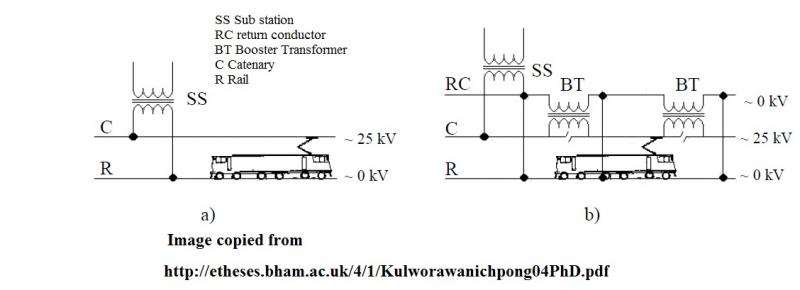That seems to make sense, given the impracticality (well, at least, cost) of insulating the running rails from earth - and if they are going to have paths to earth all along their length, I suppose they might just as well be CNEs.As do tramways. Running rails are a combined neutral and earth, overhead wire or third rail is the live conductor. ... IIRC operators of "electric guided transportation systems" (railways, tramways etc) have an explicit exception to the "no TNC" rule in the ESQCR.As far as I am aware railways use TN-C for powering electric trains.
I may need some education. I've never really thought too much about this before but, thinking of 'the past', I'm not sure what was the perceived problem with TN-C (i.e. CNEs) within installations, provided that required bonding was present and adequate - am I missing something? However, I suppose that's become moot - since the advent of RCDs, it's obviously become essential to have N and CPCs separated within the installation.
Kind Regards, John


